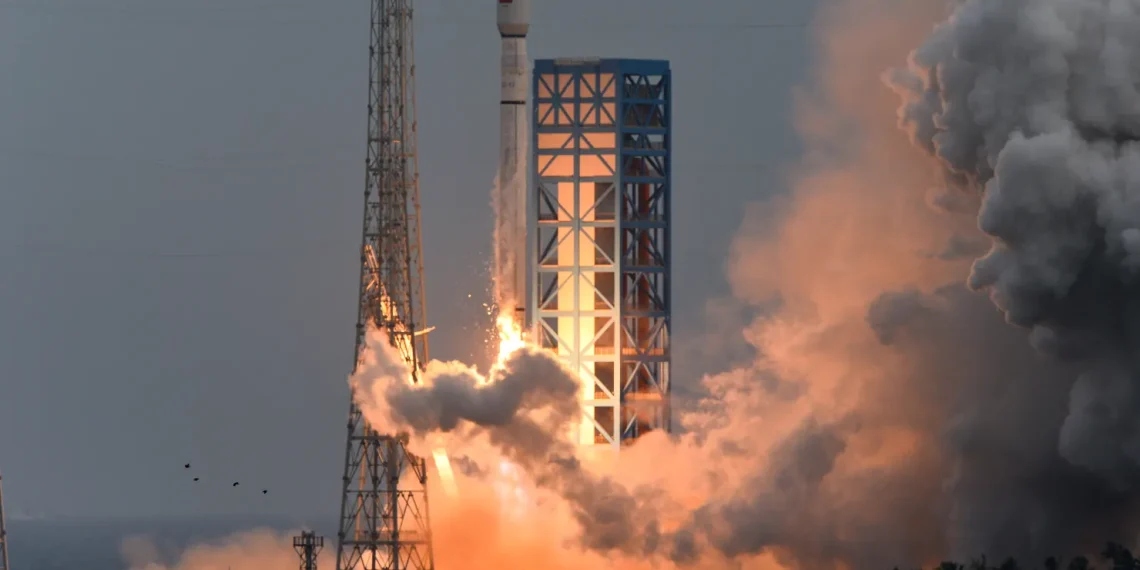WASHINGTON (Realist English). The contest between the United States and China to lead the next era of lunar exploration is tightening, as Beijing accelerates its crewed space ambitions while Washington grapples with delays in its Artemis program.
The United States has enjoyed a six-decade advantage since the Apollo missions, remaining the only nation to land astronauts on the Moon. But China has rapidly expanded its space program since its first crewed flight in 2003. This summer, Beijing achieved several milestones: the China Manned Space Agency tested its Lanyue lunar lander in Hebei province on a simulated surface, conducted a static firing of the Long March-10 rocket in Hainan, and advanced tests for the Mengzhou spacecraft, designed for future lunar missions.
China’s plans call for landing astronauts on the Moon before 2030. The effort is supported by a growing ecosystem of state-led and private companies, including Galactic Energy and LandSpace, complementing the dominant China Aerospace Science and Technology Corporation.
By contrast, NASA’s Artemis program, which aims to return U.S. astronauts to the Moon by 2027, faces uncertainty. SpaceX’s Starship has experienced a turbulent year of test launches, while Blue Origin is still developing its Mark 2 lunar lander, with only preliminary tests expected later this year. Analysts warn these delays could allow China to plant its flag first.
“I believe China could beat NASA back to the Moon,” said Professor Quentin Parker, director of the Laboratory for Space Research at the University of Hong Kong. He cited NASA’s “budget problems and leadership issues under the current U.S. administration” alongside China’s record of steady progress, including the Chang’e and Tianwen missions.
As in the Cold War space race, the stakes are not only scientific but strategic. U.S. officials have voiced concern that China’s lunar program is linked to military ambitions. General Chance Saltzman, chief of space operations at the U.S. Space Force, recently described Beijing’s satellite network as a potential “kill web” — a system capable of providing real-time targeting data against U.S. forces.
With Russia also seeking to build a joint lunar research station with China by 2035, the contest extends far beyond national prestige. The Moon, once a symbol of exploration, is reemerging as a strategic frontier where global powers test their technological, military, and political strength.


















